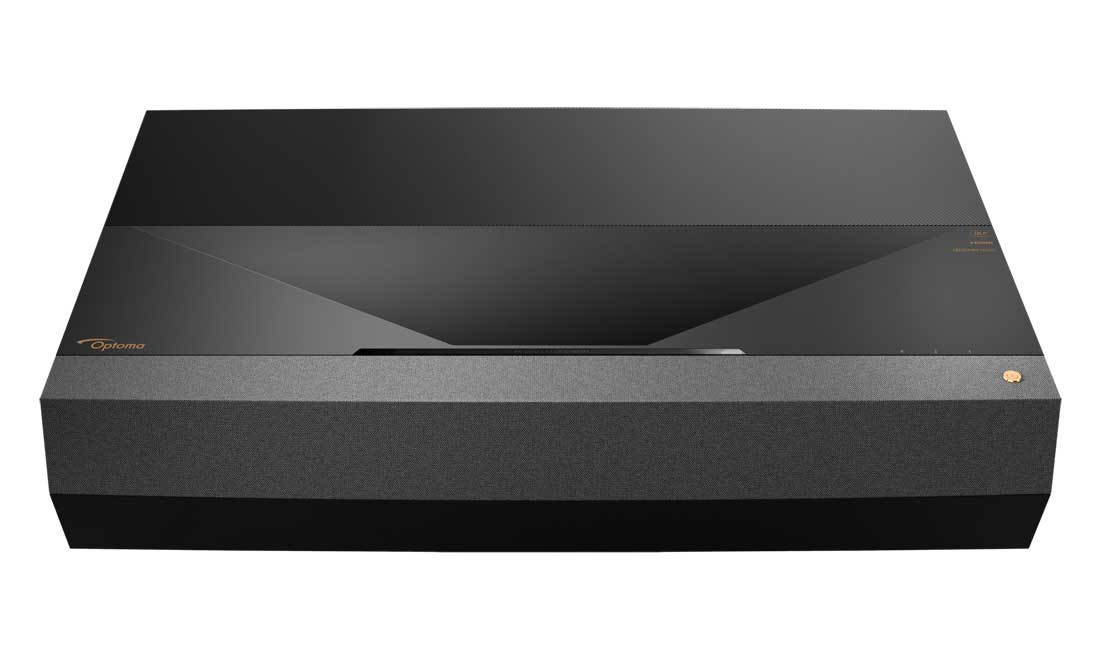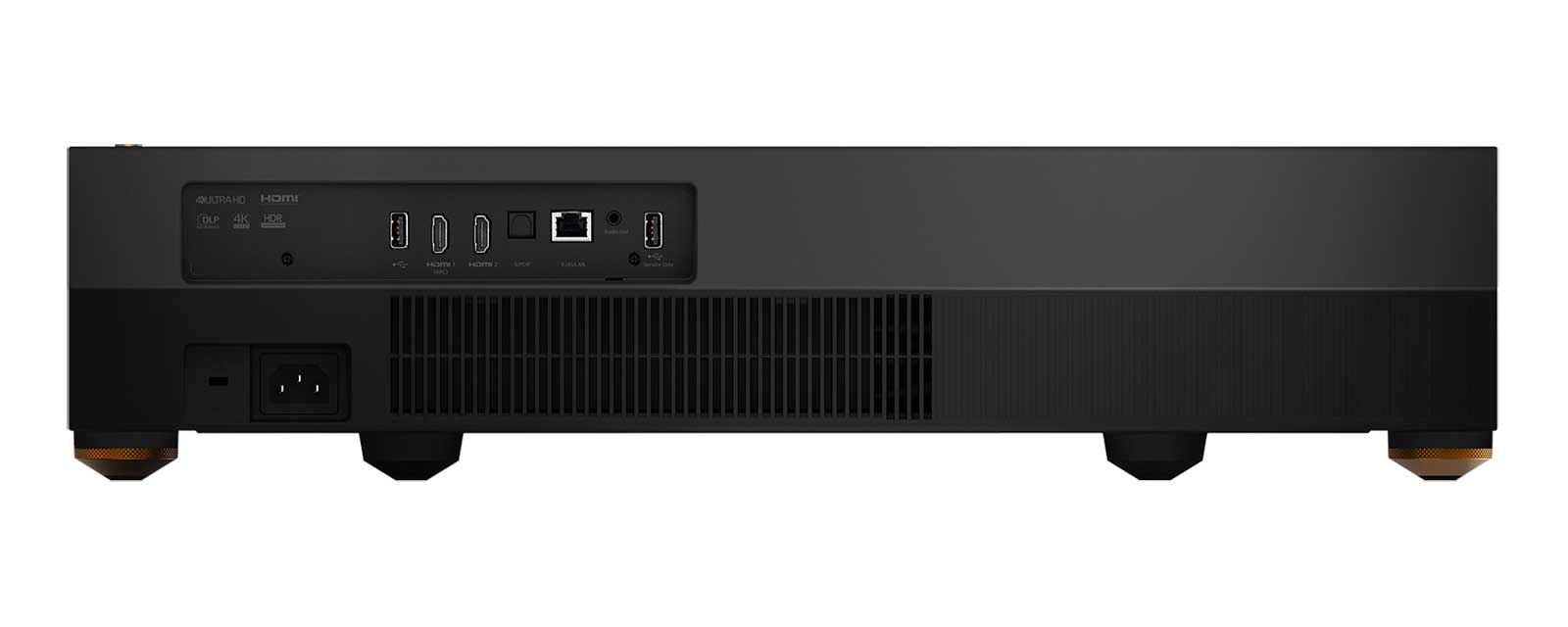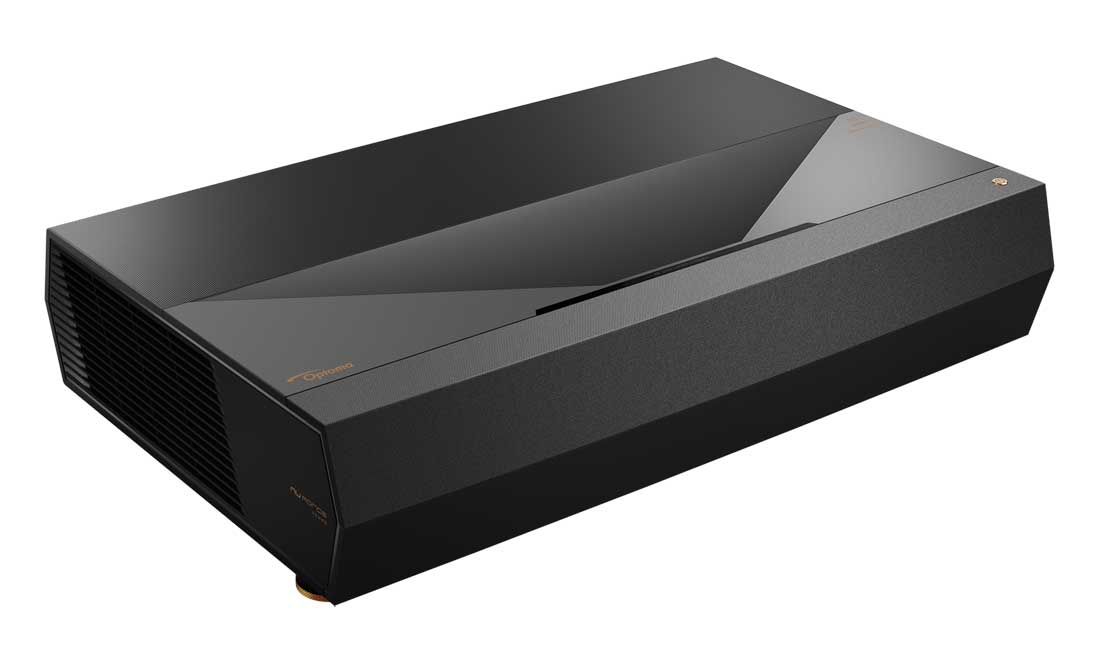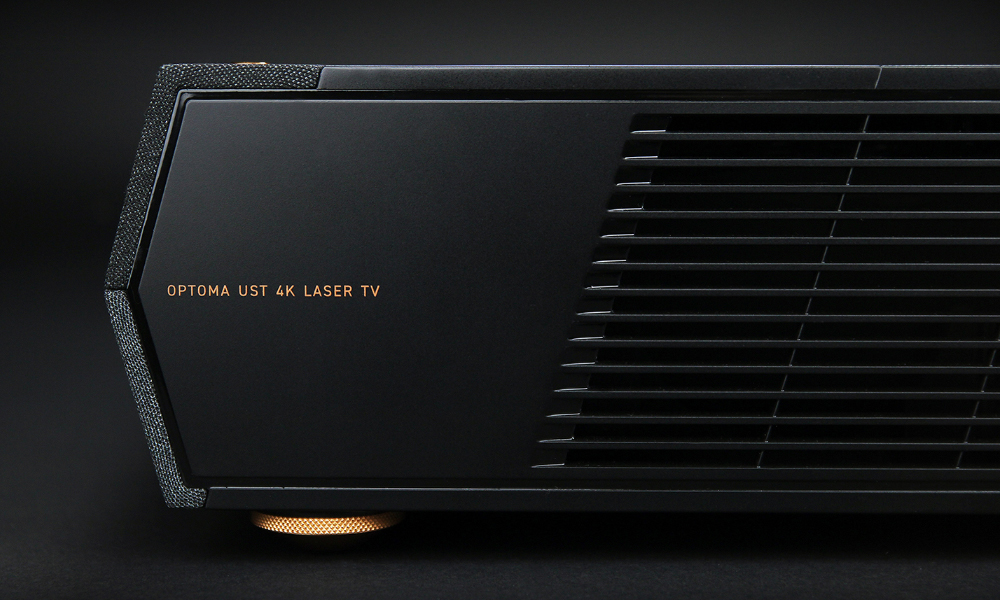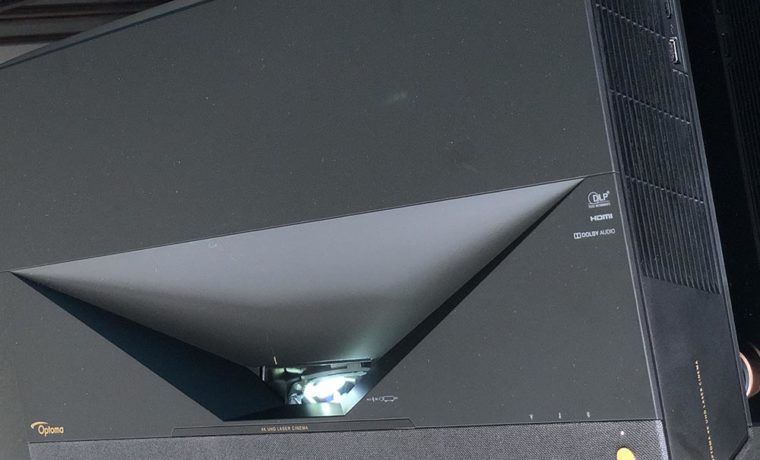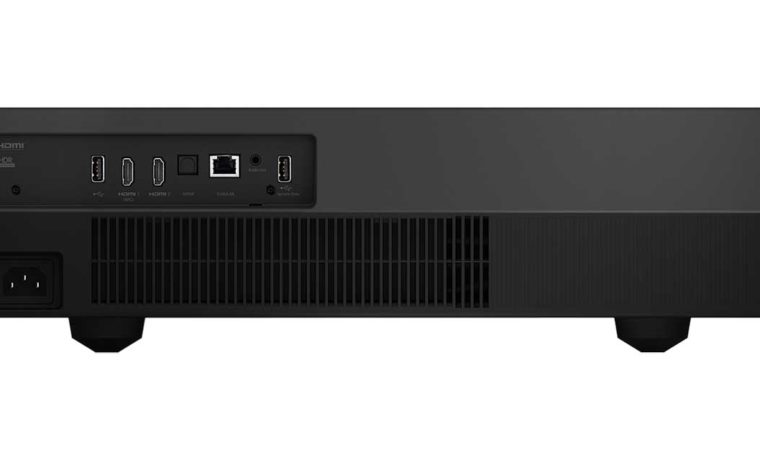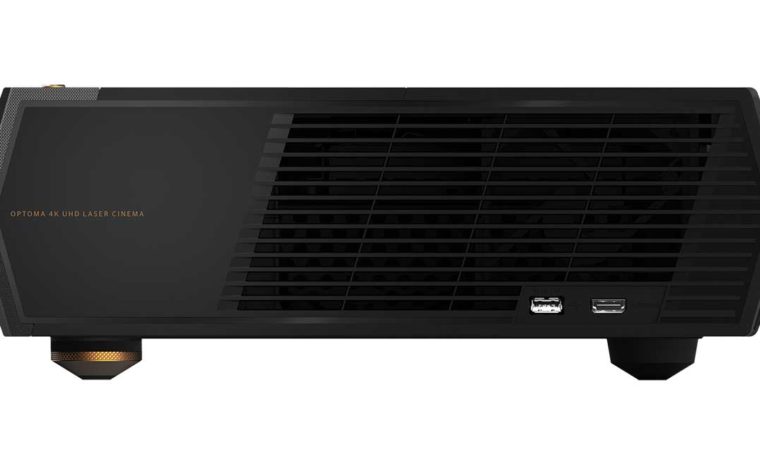If you are facing the front of the projector, and look to the right side, besides the grills for ventilation, there are two connectors mounted low near the back. One is HDMI 3, and the other is a USB for using the media player. Good job providing access from the side.
All the other inputs and outputs are located on the back of the CinemaX P1. Another venting is located on the left side, but no other connectors.
There are four feet – two rear feet set in from the sides and are not adjustable. The two front feet, however are at the front corners, and I should note, are finished with an almost rose gold-colored trim (looks killer) that matches the power button. Those front feet are screw thread adjustable and come with spacers for better stability (nice touch).
Power and Indicators
As mentioned, the power button is top right. When on standby, the first light is red, white, when it is on. All four are positioned under the speaker cloth (but yes, on the top). When sitting normally one doesn’t see the power light (in a dark room you just might be able to spot it, but I have never noticed it when watching content. Two of the other three lights are for the usual – laser, temperature, while the third indicates Bluetooth in use.
Built-in SoundBar by NuForce
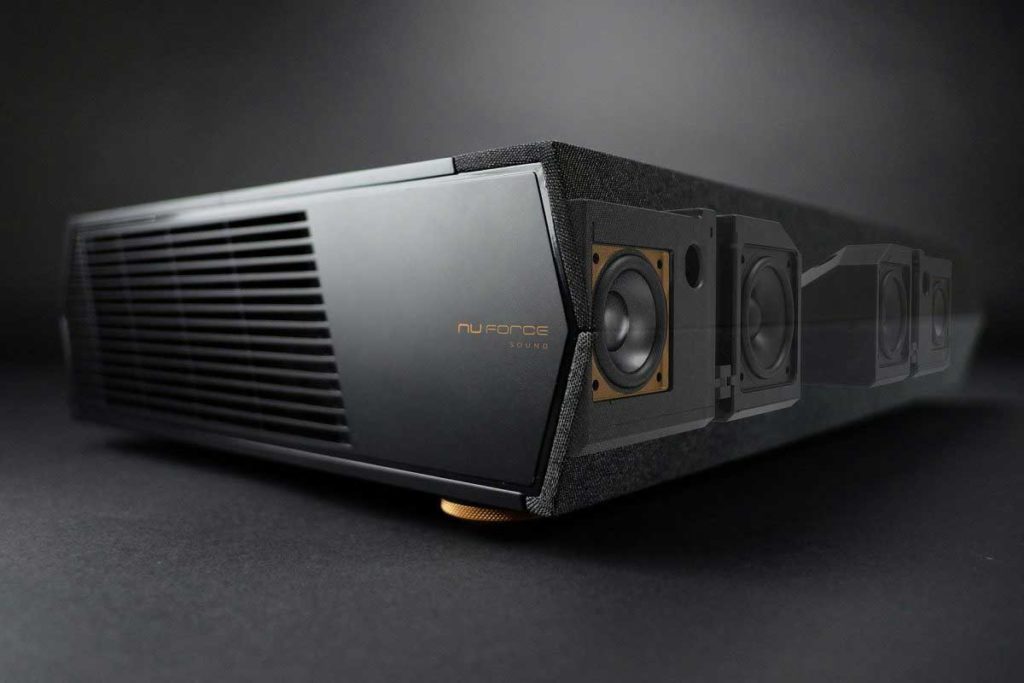
A peek "under the hood" at part of the NuForce soundbar integrated into the P1
The audio system, consisting of those four NuForce speakers, are mounted behind the front cloth grill. The spec sheet says 2x19 watts, but I’ve also seen “40 watts” somewhere. Close enough. Optoma isn’t the first company to go with an audio specialist for the speakers. In this case, they own NuForce, but other competitors use speakers from Harmon Kardon and others, with the goal of good quality room-filling sound.

